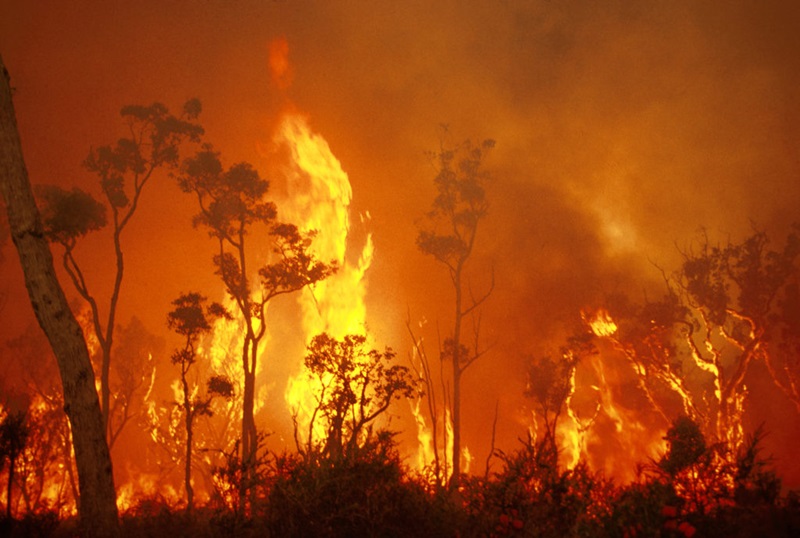Unraveling the Significance of an In-depth BAL Report for Your Residential or commercial property
Unraveling the Significance of an In-depth BAL Report for Your Residential or commercial property
Blog Article
Navigating Bush Fire Protection Laws With BAL Record
In the realm of property growth and homeownership, browsing bush fire protection regulations is vital for making certain the security and conformity of structures in high-risk areas. Central to this endeavor is the Bushfire Attack Level (BAL) report, an essential document that assesses the potential direct exposure of a building to bushfire. Understanding just how to apply the information and interpret contained within a BAL record can significantly affect the style, building, and maintenance of buildings. By diving right into the complexities of BAL assessments and their implications for constructing conformity, stakeholders can proactively take care of bush fire threats and guard residential or commercial properties against possible dangers.
Comprehending Bush Fire Security Rules
To successfully browse the intricacies of bush fire protection guidelines, it is vital to have a clear understanding of the governing standards and needs in position. Shrub fire protection guidelines are essential for protecting homes and lives in areas vulnerable to bushfires. These guidelines establish the requirements and protocols that homeowner have to stick to in order to reduce the threats associated with bushfires.

Relevance of BAL Analyses
Understanding the value of BAL assessments is essential in ensuring conformity with bush fire security laws and effectively alleviating the threats associated with bushfires. BAL evaluations, which identify the Bushfire Strike Degree of a residential property, are essential for creating appropriate bush fire protection steps customized to the details risk profile of the website. By evaluating elements such as plants kind, range to potential fire hazards, and incline of the land, BAL assessments supply beneficial insights into the level of danger a residential or commercial property deals with throughout a bushfire occasion.

Implications for Building Conformity
Navigating with structure compliance requirements in conformity with BAL assessments is vital for ensuring frameworks are appropriately strengthened against the risks positioned by bushfires. Frameworks that fail to meet the necessary compliance requirements are at a higher danger of enduring damages or destruction throughout a bushfire occasion.
Guaranteeing structure compliance includes cautious planning, construction, and upkeep to minimize the possible effect of bushfires. It calls for a comprehensive understanding of the BAL rating designated to the home and executing the suitable steps to boost its fire security capabilities.
Taking Care Of Shrub Fire Dangers Efficiently
Provided the important value of structure conformity in fortifying frameworks versus bushfire risks, effectively managing these risks calls for a thorough strategy that focuses on positive reduction approaches. To begin, performing detailed danger assessments is paramount. Understanding the particular susceptabilities of a home in relation to bushfires enables customized risk reduction plans. This involves studying aspects such as the residential property's place, bordering plant life, topography, and prevailing weather condition problems. Executing appropriate plants informative post management strategies is an additional vital element of reliable risk administration. Clearing up flammable vegetation, creating defensible areas, and ensuring proper upkeep can significantly minimize the threat of fire spreading out to the residential property. Moreover, buying fireproof structure products and construction strategies can improve the framework's capacity to endure coal assaults and straight fire get in touch with. In addition, establishing and practicing an emergency action strategy is essential for ensuring that citizens understand how to respond swiftly and safely in case of a bushfire. By integrating these positive procedures, homeowner can efficiently manage bushfire threats and boost the safety and security of their structures and passengers.
Practical Tips for Homeowners and Developers
Successfully managing bushfire threats as a property owner or developer necessitates applying functional reduction approaches tailored to the building's certain susceptabilities and environments. One crucial suggestion is to preserve a well-kept defensible area around structures, commonly a minimum of 30 meters in risky areas. This room ought to be clear of combustible vegetation, debris, and other flammable materials that can potentially sustain a fire. Additionally, choosing fire-resistant structure products can considerably improve the building's ability to hold up get redirected here against cinder strikes and straight fire get in touch with. Guaranteeing that wall surfaces, roofs, and windows are constructed or updated to satisfy appropriate bushfire protection criteria is vital.
Furthermore, producing an emergency situation plan and exercising emptying drills with family participants, employees, or tenants can conserve lives in the event of a bushfire. Staying informed about neighborhood fire threat ratings, climate conditions, and emergency situation notifies is also vital for making prompt decisions to safeguard life and building. Involving with neighborhood fire authorities, area teams, and experts experienced in bushfire administration can give important assistance and assistance in creating extensive bushfire protection approaches.
Final Thought
Finally, browsing bush fire protection regulations with a BAL record is vital for making sure building conformity and managing bush fire dangers efficiently. Understanding the value of BAL assessments and complying with practical ideas can assist developers and property owners minimize the effect of bush fires. By adhering to these policies and taking required preventative measures, individuals can produce much safer atmospheres on their own and their neighborhoods.
Key elements of bush fire defense policies consist of the Bushfire Strike Level (BAL) evaluation, which identifies the degree of danger a home deals with from bushfires. BAL analyses, which figure out the Bushfire Continued Strike Level of a building, are essential for creating proper bush fire protection actions tailored to the particular risk profile of the site. By assessing elements such as greenery kind, range to potential fire dangers, and incline of the land, BAL evaluations give useful insights into the degree of risk a property faces during a bushfire occasion.

In conclusion, browsing bush fire protection guidelines with a BAL record is crucial for making certain building conformity and managing bush fire dangers efficiently.
Report this page